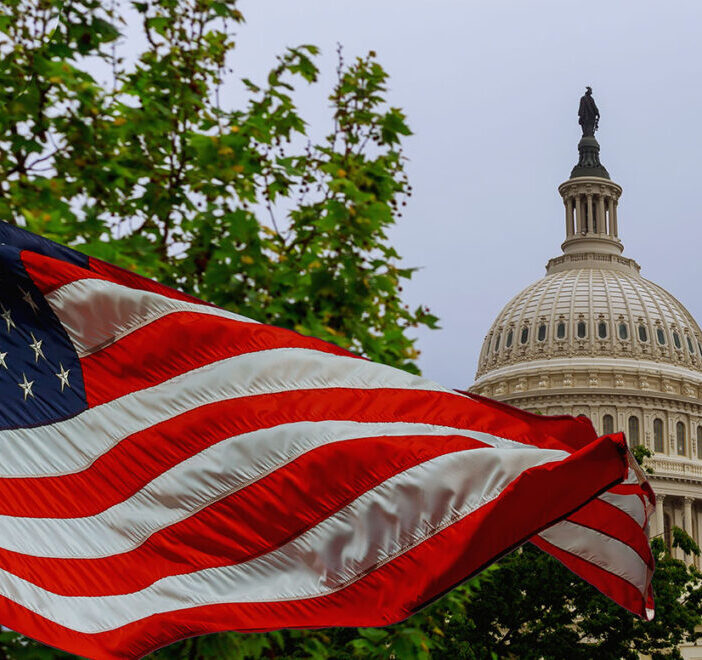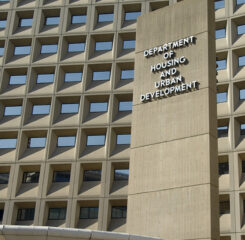Hospice 2020 Wage Index Proposal Analysis
Payment Update
Current law sets forth a formula that guides CMS’ proposed payment update that can be changed if Congress passes legislation to change the existing formula. In the proposed rule the payment update for fiscal year (FY) 2020 is 2.7% based on the estimated inpatient hospital market basket update of 3.2% minus the multifactor productivity adjustment estimated at 0.5%. CMS indicates this to be a $540 million increase in payments. However, that is a simplistic overview of the payment adjustment for this rule as it affects hospice rates.
In noting the growth in hospice utilization, CMS projects approximately 8.5% annual growth as a reflection of the increase in the number of Medicare beneficiaries, more beneficiary awareness of the Medicare hospice benefit for end-of-life care, and a growing preference for care provided in home and community-based settings. Along with that growth, an analysis was provided on the history of hospice per diem payments noting little change since 1983 with the exception of the recent bifurcation of the routine home care (RHC) rates and the inclusion of the service intensity add-on (SIA). While hospices must provide all levels of care to meet the hospice Conditions of Participation, there is much lower utilization of continuous home care (CHC), general inpatient care (GIP), and the inpatient respite care (IRC) compared to RHC.
The rule identifies research indicating that the current rates for CHC, GIP, and IRC are below the costs to provide those types of care. In an effort to more closely align reimbursement rates with costs, CMS proposes to rebase the FY 2020 rates for these three types of care. The proposal would bring the rates for CHC and GIP equal to their estimated FY 2019 average costs per day and IRC equal to the estimated FY 2019 average cost per day, with a 5% reduction to account for coinsurance. As these types of changes are required to be done in a budget-neutral manner, the rates for routine home care (RHC) are proposed to be reduced by nearly 3%. We are encouraged to see CMS attempting to promote utilization of all 4 types of hospice care, but detailed analyses are required.
The rebasing effort also is meant to help appropriately increase access to the CHC, GIP, and IRC types of care. Reimbursement rates alone should not dictate clinical decision making for a hospice beneficiary’s type of care. When considering the impact of this change, not that while the RHC rates are proposed to have a 2.71% decrease the 2.7% market basket update almost makes that component of the proposal neutral. With the proposed increases to the other three types of care, in total, hospice members are likely to see an increase under this scenario and more so providers who serve beneficiaries with a higher percentage of hospice days outside of RHC. CMS reports that the average over the last 10 years has GIP accounting for 1.7% of total hospice days, CHC accounting for 0.4% of total hospice days, and IRC accounting for 0.3% of total hospice days. We seek to hear from hospice members about their reactions to this rebasing proposal.
Wage Index
In the past, the hospice wage index values have been calculated by using the prior fiscal year’s hospital wage index. This rule proposes to use the hospital wage index from the current fiscal year as the basis for the hospice wage index. It is suggested that this would result in the most up-to-date wage data being the basis for the hospice wage index, increasing payment accuracy. Currently, the labor portion of the hospice payment rates is as follows:
- RHC, 68.71%
- CHC, 68.71%
- GIP, 64.01%
- RIC, 54.13%
Comments are sought regarding the labor portion of the hospice payment rates.
Election Statement Addendum
Noting that hospice services are virtually all-inclusive and that in order to make an informed choice about whether to receive hospice care, the patient, family, and caregiver must have an understanding of what services are going to be provided by the hospice and that care should focus on comfort and quality of life. With the comprehensive nature of hospice services, upon election, the individual waives all rights to Medicare payment for services related to the treatment of their terminal condition. Following a discussion focusing on services unrelated to the terminal diagnosis, CMS notes in the proposed rule that the amount and nature of the non-hospice services being billed to Medicare outside of the hospice benefit suggests that hospice beneficiaries may not be fully informed of the items, services, and drugs the hospice has determined to be unrelated to their terminal illness and related conditions.
As a response to these concerns, CMS is proposing to modify the hospice election statement content requirements to increase coverage transparency for patients under a hospice election. Specifically, they are proposing the following on the election statement:
- Information about the holistic, comprehensive nature of the Medicare hospice benefit,
- A statement that, although it would be rare, there could be some necessary items, drugs, or services that will not be covered by the hospice because the hospice has determined that these items, drugs, or services are to treat a condition that is unrelated to the terminal illness and related conditions.
- Information about beneficiary cost-sharing for hospice services.
- Notification of the beneficiary’s (or representative’s) right to request an election statement addendum that includes a written list and a rationale for the conditions, items, drugs, or services that the hospice has determined to be unrelated to the terminal illness and related conditions and that immediate advocacy is available if the beneficiary (or representative) disagrees with the hospice’s determination.
Additionally, they propose that hospices would be required to provide an election statement addendum with a list and rationale for the conditions, items, services, and drugs that the hospice has determined as unrelated to the terminal illness and related conditions. The proposed election statement addendum outlines the content requirements for the addendum, but it does not mandate the use of a specific form.
CMS estimates that the burden associated with this proposal would be 30 minutes to develop the election addendum form and 10 minutes of registered nurse (RN) time to complete the addendum per hospice election. While supportive of the additional support to individuals and families to make an informed decision to elect the hospice benefit, we seek member feedback about the estimated burden as well as content for the election statement contents and addendum.
Hospice Quality Reporting Program (HQRP)
As previously noted, CMS has decided not to publicly report the second measure – the percentage of patients receiving at least 2 visits from social workers, chaplains or spiritual counselors, licensed practical nurses, or aides in the last 7 days of life – of the “ Hospice Visits when Death is Imminent” pair at this time. Further testing is underway and CMS believes the topic is important and will continue to report results to providers in their confidential CASPER quality measures report. The first measure – the percentage of patients receiving at least 1 visit from a registered nurse, physician, nurse practitioner, or physician assistant in the last 3 days of life – will be publicly reported as previously stated in the FY 2019 final rule.
The proposal noted CMS’ plan to explore the development of claims-based and outcome measures for the HQRP to work toward the high priority areas of reducing regulatory burden and identifying gaps in care. While not proposing new measures at this time, there is an opportunity to provide feedback on these approaches for future development. Targeted work remains on two priority areas, potentially avoidable hospice care transitions and access to levels of hospice care, even though the current specifications have run into challenges.
Hospice Carve-In and Other Payment Models
As recently announced that the hospice benefit will be tested in Value-Based Insurance Design (VBID) Model within Medicare Advantage (MA) plans beginning in 2021, CMS is taking the opportunity to seek additional input into not only the implications of the hospice carve-in but other alternative payment models as well. They we seek information on the interaction of the hospice benefit and various alternative care delivery models, including MA, Accountable Care Organizations (ACOs), and other future models designed to change the incentives in providing care under traditional Medicare. Specifically, CMS is seeking public comments on broader approaches than just VBID regarding the appropriate role of hospice as part of the care options available. Questions include:
- How hospice under traditional Medicare relates to other treatment options?
- How hospice impacts the provision of a spectrum of care for those that need supportive and palliative care before becoming hospice eligible and after?
- Whether rates of live discharge are a reflection of the current structure of traditional Medicare?
- Are there any care coordination differences for hospice patients that received traditional Medicare prior to hospice election, were enrolled in an MA plan prior to hospice election, or received care from providers that participate in an ACO prior to hospice election?
- What are the pros and cons of including hospice services as the part of the benefits provided in value-based or capitated payment arrangements given that some hospices likely have experience with ACOs and experience with Medicaid managed care when providing hospice care through the Medicaid program, as well as experience in providing hospice care to patients enrolled in ‘‘commercial coverage’’ (non-Medicare/Medicaid managed care plans)?
LeadingAge believes there is an opportunity for good partnerships depending on program design. We are pleased to see the carve-in will be evaluated for the impact on cost and quality of the approach before making it mandatory in all MA plans. LeadingAge is closely following this issue for our hospice members and will share more information as available. It is important that alternative payment models are designed in way that is thoughtful and ensures beneficiary and family access to the critical services offered by community-integrated hospice providers.
Next Steps
We encourage members to review the proposed rule and specifically the provisions highlighted in this article and share the feedback with us. Public comments are being accepted until 5 p.m. on June 18, 2019. Member feedback that is received prior to LeadingAge comment submission can be incorporated into our comment letter.

Most Recommended
October 15, 2025
 Shutdown Week Three: Impact of Ongoing Closure on Affordable Housing
Shutdown Week Three: Impact of Ongoing Closure on Affordable Housing
December 10, 2025
Fiscal Year (FY) Funding 2026
October 07, 2025
Immigrant Workforce Matching Program Brings Workforce Relief
Recently Added
December 18, 2025
HUD Delays HOTMA to 2027 for Multifamily Housing
December 17, 2025
 Colleagues on the Move, December 17, 2025
Colleagues on the Move, December 17, 2025
December 16, 2025



